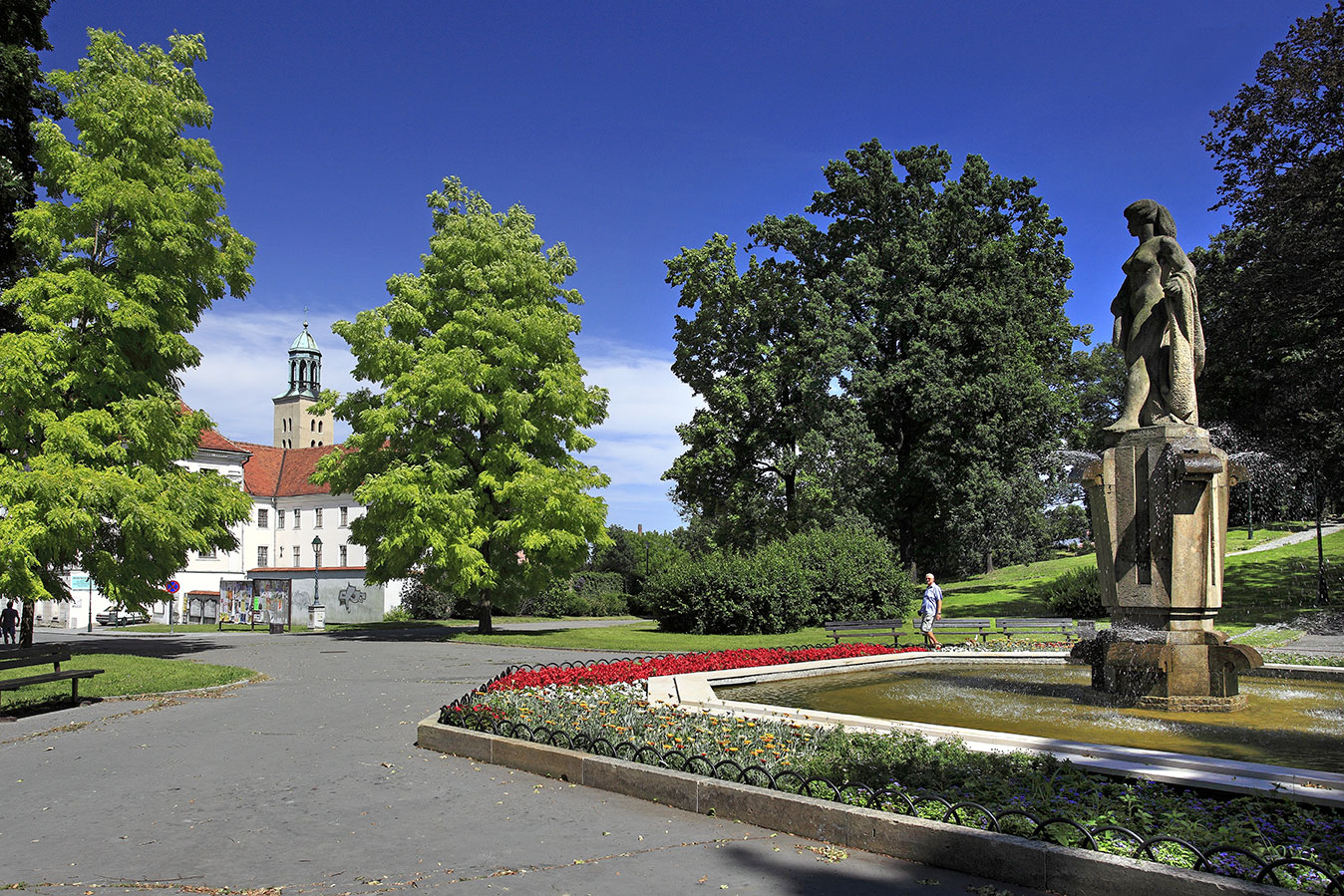Svoboda Gardens in Opava
Opava citizens enjoyed the city's orchards and parks as early as the end of the 18th century. At that time, the enlightened mayor Jan Josef Schössler began to promote a ring of greenery around the city centre. These parks, which were used for walking in the green, were called "kiosks". The first parks were created at the sites of the defensive ditches and the city walls and gradually formed a green circle around the entire historic centre of the city.
One of the city’s parks is the Svoboda Gardens (Freedom Gardens), where dark red varieties of beech and maple shine into the green. The combination of these colours along with the purple flowering lilacs is influenced by the fashion of the Art Nouveau period. The gardens are dominated by the sculpture Nová Opava by sculptor Vincenc Havel from 1958. Originally, however, on the massive pedestal of this statue stood the Emperor Joseph II and the poet Friedrich Schiller.
The Svoboda Gardens include a century-old avenue of maple trees that leads to the statue of Nová Opava and a yew tree that stands in front of Karel Schinzel’s house. This native of nearby Rýmařov is considered the discoverer of the colour photography process.The dominant feature of the park is Ptačí vrch (Bird Hill), a remnant of the artillery bastion and the town’s defence system. Today, it is mainly known for its sculptures by Kurt Gebauer.
Contact
MIC Opava
Horní nám. 67
746 26 Opava
E-mail: informacni.centrum@opava-city.cz
Web: http://www.opava-city.cz
Tel.: +420 553 756 143

